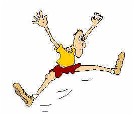

    |
||||||||||||
 |
Inspiring Breakthrough |
|||||||||||
Multiple IntelligencesBy incorporating into the learning experience a mixture of activities that meet the 8 different styles of learning ensures maximum effectiveness, input and retention. There are 8 learning styles or intelligences as researched and published by Howard Gardner: Musical, Kinaesthetic, Mathematical / Logical, Visual / Spatial, Linguistic, Interpersonal, Intrapersonal and Naturalist. In the following pages you can learn more about each intelligence and suggestions on how to develop these further. Kinaesthetic IntelligenceSome people find that they are able to learn extremely well when they are involved in some form of physical activity rather than just sitting still. They may be extremely skilful with their hands, or they may be very physically skilled using their whole body. In either case such individuals are able to adapt these physical abilities towards many different kinaesthetic challenges. To some extent, Western culture often sees this ‘manual’ intelligence as of lesser value than other intelligences – however, it is clear that all of us would prefer our surgeon to excel in this intelligence! Gardener defines the core components of Kinaesthetic Intelligence as the ability to use ones body in highly differentiated and skilled ways, for expressive as well as goal-directed purposes to work skilfully with objects, both those that involve fine motor movements of ones fingers and hands and those that exploit gross motor movements – thus encompassing the intricate kinaesthetic intelligence of the surgeon and the large motor kinaesthetic intelligence of the football player. Individuals with strong kinaesthetic skills usually fall into one of the following two categories:-
Each of us utilises a degree of Kinaesthetic Intelligence everyday; indeed 80% of what we communicate to others is non-verbal. It is true to say that many concepts can only truly be understood if we supplement or replace an explanation with a non-verbal element. To actually physically experience something for yourself allows for a clearer insight, a deeper understanding and a more lasting memory. Develop Bodily Intelligence by:Bodily intelligence involves both large motor activity (such as sport) and small dextrous activity (such as model building). To develop bodily intelligence it would be best to explore both aspects simultaneously – regardless of how unfit you may be. Some suggestions regarding ways to develop large and small motor bodily intelligence could be:
To further develop your learning styles we strongly recommend the following:
Howard Gardners brilliant conception of individual competence is changing the face of education today. In the ten years since the publication of his seminal Frames of Mind , thousands of educators, parents, and researchers have explored the practical implications of Multiple Intelligences (MI) theory the powerful notion that there are separate human capacities, ranging from musical intelligence to the intelligence involved in understanding oneself. Multiple Intelligences: The Theory in Practice brings together previously published and original work by Gardner and his colleagues at Project Zero.
The author demonstrates that there exist many human "intelligences", common to all cultures - each with its own pattern of development and brain activity, and each different in kind from the others. These potentials include linguistic, musical and logical/mathematical capacities, as well as spatial and bodily intelligences, and the ability to arrive at an emotional and mental sense of self and other people. Rather than reducing an individual's potential to a single score on an IQ test, it is the fostering and education of all these intelligences that should be our concern.
Other Inspiring Breakthrough Multiple Intelligences within this section; Musical Individual
Performance Improvement OUR MISSIONInspiring Breakthrough aim to create behavioural change, within organisations, through inspiring coaching and tailored development solutions. By empowering individual breakthrough from perceived potential to the achievement of their true potential. Click here to ask any questions about how we can help you improve your business. |
||||||||||||
|
Copyright ©
Inspiring Breakthrough, 2003-5
|
||||||||||||